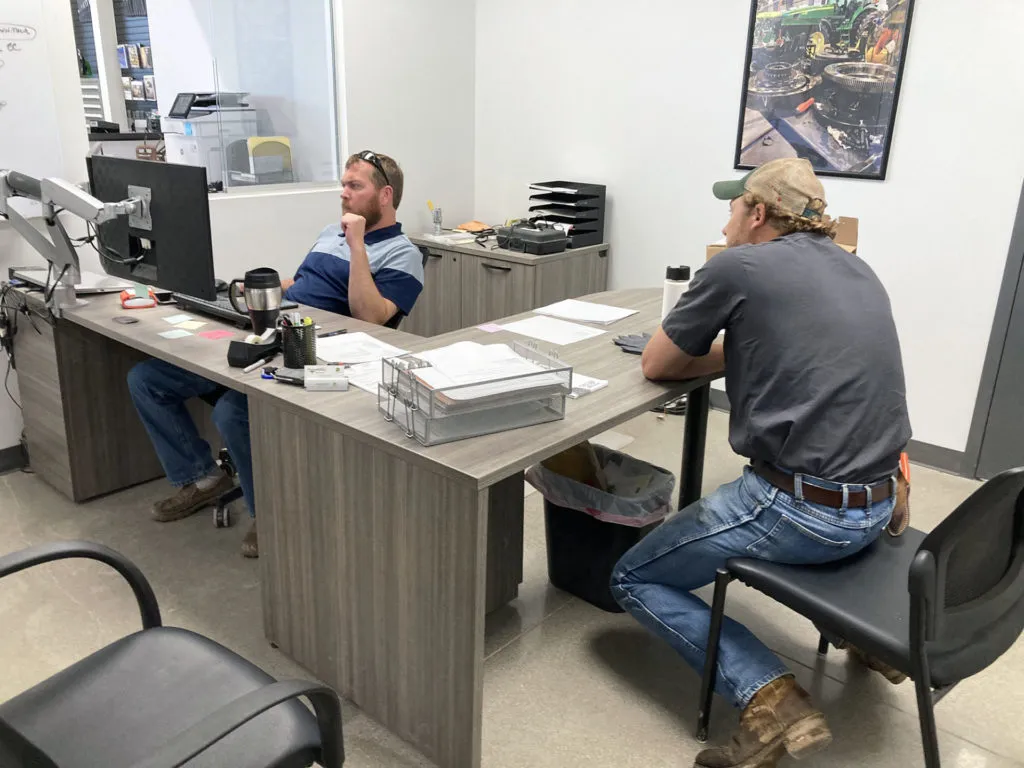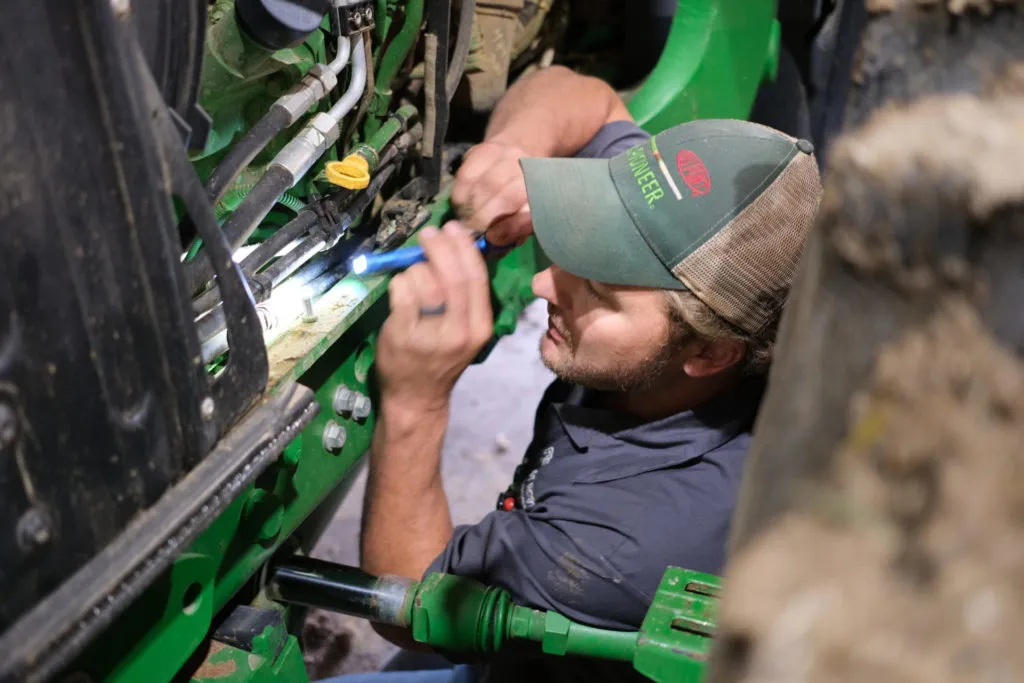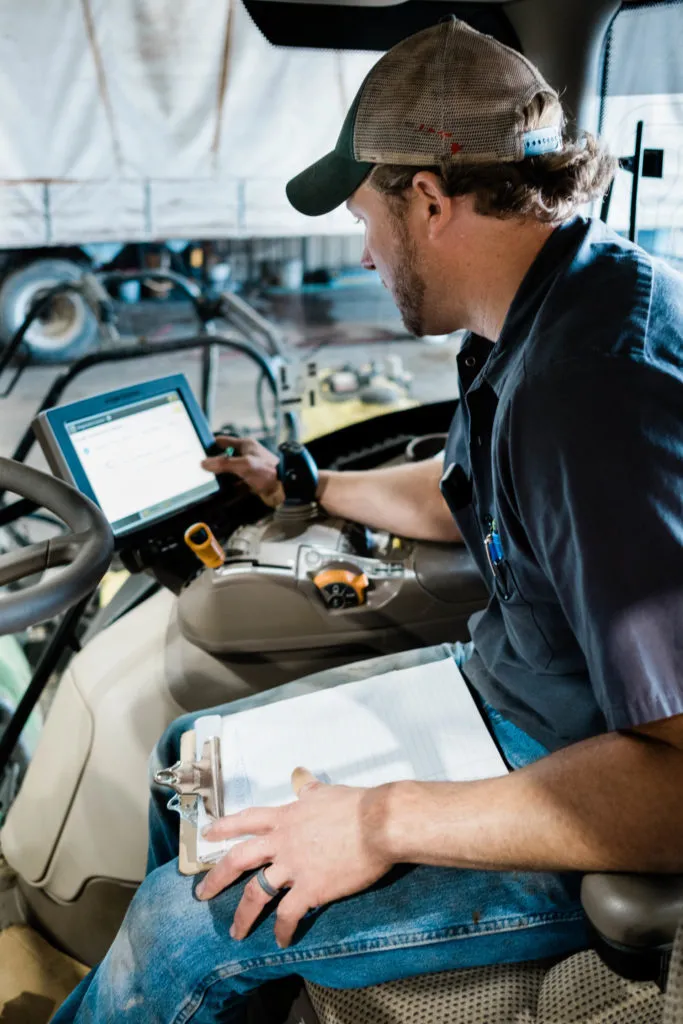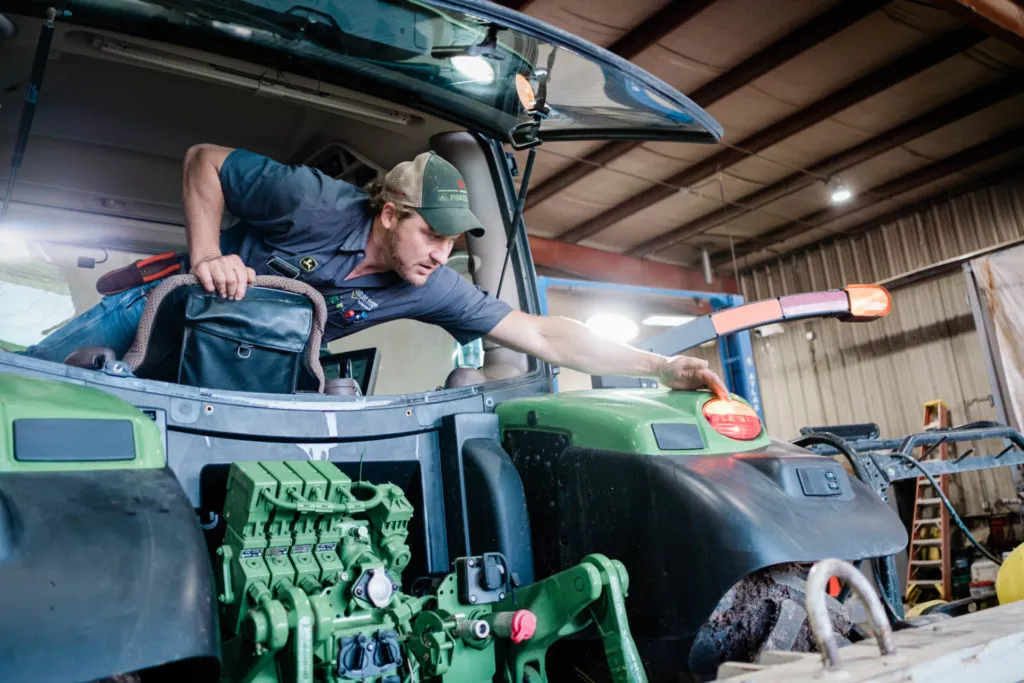A Day in the Life of Field Service Technician Jeremy Vanek
Have you ever wondered what it’s like to be a field service technician at a John Deere dealership? I’ve been a technician at Platte Valley Equipment for about 10 years, six of which have been as a field service technician. It’s an exciting and challenging job, and while no day is the same, I invite you to follow me along on an "average" day.
4:30 AM
My day starts pretty early. In addition to being a field service technician for Platte Valley Equipment, I own a small farm near Howells, Nebraska. I currently have about 500 chickens and 10 hogs. I spend my morning checking on the animals, making sure they have food and water, and cleaning around the farm.
6:30 AM
After my farm tasks are complete, I leave around 6:30 AM to arrive at the shop when we open.
7:30 AM
I arrive at the shop at 7:30 AM and clean anything out of my truck that I need to from the previous day’s service calls. This might be broken equipment I removed from a machine or extra parts that I brought along for a repair but didn’t need. Then, I stop in and visit with our service manager. I go over yesterday’s repair orders to make sure he’s up to date on the work I performed and how I was able to fix the machines so he can inform the customer.
After my updates, the service manager goes over the work that I’m being assigned for the day. Based on these assignments, I’ll put in parts orders so I can load what I need in my truck for the day. Since I’m a field service technician, I don’t have the luxury of being right next to the parts department in the shop. I have to think ahead and take every part, bolt, or sensor I might need to fix a problem.

8:00 AM
While waiting for parts to be ready, I spend some time on my computer updating work orders from the day before so that everything is in the system for the service manager and customer. This isn’t the most exciting part of my day, but it’s a very important step to make sure that work is billed out correctly, such as labor and the parts I used to fix a machine. All of this goes into our database so we have detailed records of the work that was performed on each customer’s machine.

8:30 AM
Once I’m done with work on the computer, I go back to the parts department and pick up the parts I ordered for that day’s repairs. I load these into my service truck and leave for my first service call.

9:00-10:00 AM
Driving to my first service call can take anywhere from a few minutes to an hour or more. This just depends on the repairs I’m assigned that day, where the customer is located, and the priorities of the different jobs I’m given.
Finding machines is always a bit of a challenge. Some customers will have the equipment pulled into their shop and ready for me, while other times I might have to hunt around to find it. While I was a bit skeptical of John Deere’s JDLink when it first came out, I’m now a big believer and use it all the time when I’m looking for machines. It saves me a bunch of time and guesswork when I’m looking for a piece of equipment and can’t get ahold of the customer. I can log in, enter the serial number of the machine from the work order, and get the exact GPS location and even turn-by-turn directions.
10:00 AM
Once I arrive at the machine, I always start with a general walkaround and inspection. You don’t want to fix the issue you were called for only to leave and have the customer experience another problem you overlooked. I spend time looking at all the moving parts, seals, and areas of the equipment the farmer or equipment operator doesn’t typically look at, like underneath a tractor. Then, I will jump in the cab and look at the display. Everything is controlled by computers these days, so I’m looking for any trouble codes or diagnostics that might be present. This often helps me with the repair I’ve been assigned, but also lets me know if there are any other issues I need to be aware of.

I always start with the easiest repairs first, which is frequently updating software and controllers on the machine. You would be surprised how many issues are solved with a simple software update. Once the updates are complete, I turn on the machine and see if any of the diagnostic codes come back. If they do, I know I have some work cut out for me. If they don’t, then it’s possible the issue is fixed.

Depending on the repair I’ve been assigned, fixing a machine might take as little as one hour or it could take me all day and even go into the evening. As a field service technician, my calls are typically because a machine is down and the customer needs to get running as soon as possible. This means I work until the job is done.
12:00 PM
Around noon I take a short break for lunch in my service truck. I have a wonderful wife who packs me a lunch in the morning while I’m working on farm chores, so it’s always a refreshing surprise to open up my lunch box and see what she’s packed me for the day.
12:30-5:30 PM
After I’m done eating, it’s either back to work on the current job, or off to the next customer and repair. I will keep working on repairs typically until around 5:30 PM, but every day is different. It’s not uncommon for me to be working on a repair until well into the evening or late at night to make sure I can get the customer running. It’s also not uncommon for me to finish working on a machine, check in with the service manager, and get assigned to another job that has come in since I left that morning.

5:30 PM
At the end of the day, I head back home, where I eat dinner with my wife and work on some more jobs around our farm and great ready to do it all again tomorrow.
My Final Thoughts
I find being a service technician to be very fulfilling. My favorite thing about my job is going out on a call to a customer whose machine is down and they can’t even move, can’t figure out the issue, and the rain is coming. The pressure is on to get them going again, and you might be the only person in a 100-mile radius who can get them running. The best feeling in the world is the look on their face when you get their machine working again so they can make their livelihood.
Being a field service technician is very challenging work, and it’s definitely not for everyone. You have to be comfortable working in the field, working directly with customers, and be able to think on your feet and solve problems on your own. You can’t just walk over to the next service bay and ask another technician for advice or go to the parts department and get a part you forgot to pick up earlier. Despite its challenges, there’s nothing I would rather be doing at this stage in my career.
From Auto Mechanic to Ag Service Technician: Hear how Jeremy got started in his career.